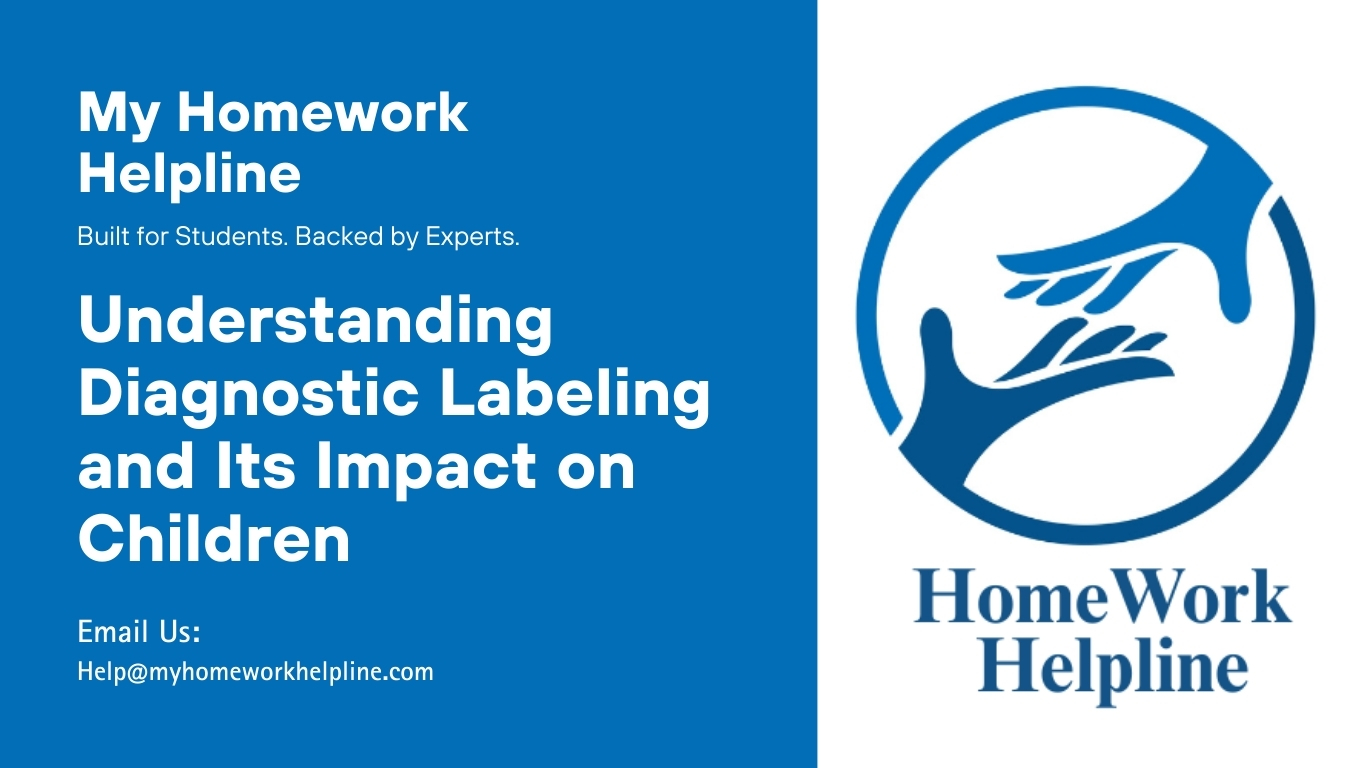Effects of Diagnostic Labeling on Children: Impacts and Insights
Diagnostic labeling was quite an intriguing concept due to its doubtful advantage. Medical practitioners use diagnoses to classify patients for both treatment and learning. Despite their apparent benefits, diagnostic labels regularly serve as a set off for stigma and prejudices. When labeling a child, an adjective frequently characterizes the youngster’s personality, mannerisms, or appearance. So, as is the case for the need to update the labels Now, “autism spectrum disorders” and “fetal alcohol spectrum disorders” have taken the place of the previous terms “autism” and “fetal alcohol syndrome,” respectively (Pelz & Overstreet, 2022). Words have much power, and doctors, psychiatrists, and families constantly struggle to characterize a child’s situation without attaching a negative label.
The labels parents give their offspring may have an enduring influence on how they identify themselves. A youngster’s label will fragment their identity once they obtain one. Labels placing kids in boxes frequently result in more harm than good. Labeling children impacts how they perceive themselves, their societal expectations of them, and their treatment, affecting who they become (Ciolino, 2018). Labeling children can affect how they feel about themselves, how others treat them limiting their potential. Even favorable labels might be problematic since they can make parents assume the worst.
Need help with your psychology assignment or seeking expert homework assistance on childhood development and diagnostic labeling? At My Homework Helpline, our team delivers detailed and well-researched solutions for essays, research papers, and assignments. Improve your understanding and boost your grades by using our professional psychology homework helpline services, tailored to provide accurate guidance and support for students tackling complex academic topics.
Although labels can be fatal, their associated awareness can be empowering. Diagnostic descriptions enable parents to comprehend better, what difficulties their children are experiencing by defining the labels (Peters & Ansari, 2019). Hope for refining access, Accessibility, and Efficiency of medical care as well as upsurges in these statistics, are used to debate for better access to and accessibility of healthcare resources, to undeviating rehabilitation, and to accentuate the need for study and expert teaching as elaborate in the Frontier in public health journal (Sims et al., 2021). Diagnoses show prevalence and incidence, hence the need to use the correct terms and labels.
Class Topic
The labeling theory is quite an intriguing theory. It is the social psychological assumption that categorizing a person with respect to particular personality patterns may substantially impact that person’s personality as a type of self-fulfilling prophecy. It was quite an interesting topic because it inspires and reinforces the need to use the correct dialectical labels as they shape what, how, and who a person will become once associated with the label.
References
Ciolino, C. G. (2018). Language profiles of children who have experienced complex trauma and fetal alcohol spectrum disorders.
Pelz, B., & Overstreet, L. (2022). Discussion: Labeling and Children. Developmental Psychology.
Peters, L., & Ansari, D. (2019). Are specific learning disorders truly specific, and are they disorders?. Trends in Neuroscience and Education, 17, 100115.
Sims, R., Michaleff, Z. A., Glasziou, P., & Thomas, R. (2021). Consequences of a diagnostic label: a systematic scoping review and thematic framework. Frontiers in Public Health, 9, 2111.

